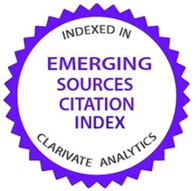Actualización sobre el síndrome de estrés tibial medial
DOI:
https://doi.org/10.21830/19006586.13Palabras clave:
Síndrome de estrés tibial medial, periostitis tibial, dolor en piernaResumen
El síndrome de estrés tibial medial, SETM, una de las causas más comunes de dolor inducido por el ejercicio en las extremidades inferiores entre los practicantes de actividad física y deporte, como corredores y militares en formación, es un evento semiológico producido por lesiones repetitivas de estrés mecánico en la región medial de la tibia. No suele revestir gravedad, pero si no se trata adecuadamente puede evolucionar a lesiones incapacitantes, como la llamada fractura por estrés de la tibia. Existen factores de riesgo que contribuyen al desarrollo de la patología entre los que cabe mencionar el tipo de actividad, las inadecuadas técnicas de entrenamiento, las condiciones del terreno y el tipo de calzado utilizado, también la pronación anormal de la articulación subastragalina, el sexo femenino, un índice de masa corporal elevado, así como la disminución de la densidad mineral ósea. El diagnóstico generalmente se establece a través del interrogatorio y el examen físico, ya que las radiografías solo sirven para descartar fracturas por estrés de la tibia, y exámenes de imágenes más costosos no se justifican. El tiempo de recuperación de los afectados por esta patología es bastante prolongado, lo que propicia la tendencia al abandono del tratamiento y, así, desfavorece la consecución de los objetivos terapéuticos propuestos. El tratamiento estándar de oro es la terapia física; sin embargo, existen otras modalidades terapéuticas con prometedoras perspectivas, entre las que sobresale la terapia por ondas de choque extracorpóreas, respecto de la cual los estudios disponibles son todavía insuficientes, pues tanto la fisiopatología del SETM, como su prevención y su tratamiento aún no están claros. En atención a lo anteriormente expuesto, este artículo presenta una revisión del estado del arte de los aspectos fundamentales de la patología.
Descargas
Referencias bibliográficas
Abramowitz, A. J., Schepsis, A. & McArthur, C. (1994). The medial tibial syndrome. The role of surgery. Orthopaedic Review, 23(11), 875-881.
PMid:7854840
Ali, T., Mohammed, F., Mencia, M., Maharaj, D. & Hoford, R. (2013). Surgical management of exertional anterior compartment syndrome of the leg. The West Indian medical journal, 62(6), 529-532.
https://doi.org/10.7727/wimj.2006.135
PMid:24756740
Anderson, M. W. & Greenspan, A. (1996). Stress fractures. Radiology, 199(1), 1-12.
https://doi.org/10.1148/radiology.199.1.8633129
PMid:8633129
Anderson, M. W., Ugalde, V., Batt, M. & Gacayan, J. (1997). Shin splints: MR appearance in a preliminary study. Radiology, 204(1), 177-180.
https://doi.org/10.1148/radiology.204.1.9205242
PMid:9205242
Andrish, J. T., Bergfeld, J. A. & Walheim, J. (1974). A prospective study on the management of shin splints. The Journal of Bone & Joint Surgery, 56(8), 1697-1700.
https://doi.org/10.2106/00004623-197456080-00021
Aoki, Y., Yasuda, K., Tohyama, H., Ito, H. & Minami, A. (2004). Magnetic resonance imaging in stress fractures and shin splints. Clinical orthopaedics and related research, 421, 260-267.
https://doi.org/10.1097/01.blo.0000126333.13806.87
Avancini-Dobrović, V., Frlan-Vrgoč, L., Stamenković, D., Pavlović, I. & Schnurrer-Luke Vrbanić, T. (2011). Radial extracorporeal shock wave therapy in the treatment of shoulder calcific tendinitis. Collegium Antropologicum, 35(2), 221-225.
PMid:22220440
Bartosik, K. E., Sitler, M., Hillstrom, H. J., Palamarchuk, H., Huxel, K. & Kim, E. (2010). Anatomical and biomechanical assessments of medial tibial stress syndrome. Journal of the American Podiatric Medical Association, 100(2), 121-132.
https://doi.org/10.7547/1000121
PMid:20237364
Batt, M. E., Ugalde, V., Anderson, M. W. & Shelton, D. K. (1998). A prospective controlled study of diagnostic imaging for acute shin splints. Medicine & Science in Sports & Exercise, 30(11), 1564-1571.
https://doi.org/10.1097/00005768-199811000-00002
Beck, B. R. & Osternig, L. R. (1994). Medial tibial stress syndrome. The location of muscles in the leg in relation to symptoms. The Journal of Bone & Joint Surgery, 76(7), 1057-1061.
https://doi.org/10.2106/00004623-199407000-00015
Beck, B. R. (1998). Tibial stress injuries. An aetiological review for the purposes of guiding management. Sports Medicine, 26(4), 265-279.
https://doi.org/10.2165/00007256-199826040-00005
Bennett, J. E., Reinking, M. F., Pluemer, B., Pentel, A., Seaton, M. & Killian, C. (2001). Factors contributing to the development of medial tibial stress syndrome in high school runners. Journal of Orthopaedic & Sports Physical Therapy, 31(9), 504-510.
https://doi.org/10.2519/jospt.2001.31.9.504
PMid:11570734
Brushøj, C., Larsen, K., Albrecht-Beste, E., Nielsen, M. B., Løye, F. & Hölmich, P. (2008). Prevention of Overuse Injuries by a Concurrent Exercise Program in Subjects Exposed to an Increase in Training Load A Randomized Controlled Trial of 1020 Army Recruits. The American journal of sports medicine, 36(4), 663-670.
https://doi.org/10.1177/0363546508315469
PMid:18337359
Burne, S. G., Khan, K. M., Boudville, P. B., Mallet, R. J., Newman, P. M., Steinman, L. J. & Thornton, E. (2004). Risk factors associated with exertional medial tibial pain: a 12 month prospective clinical study. British journal of sports medicine, 38(4), 441-445.
https://doi.org/10.1136/bjsm.2002.004499
PMid:15273181 PMCid:PMC1724904
Callison, M. (2002). Acupuncture and tibial stress syndrome (shin splints). Journal of Chinese Medicine, 70, 24-27. 16. Clanton, T. O., & Solcher, B. W. (1994). Chronic leg pain in the athlete. Clinics in Sports Medicine, 13(4), 743-759.
Clanton, T. O., & Solcher, B. W. (1994). Chronic leg pain in the athlete. Clinics in Sports Medicine, 13(4), 743-759.
Couture, C. J. & Karlson, K. A. (2002). Tibial stress injuries: decisive diagnosis and treatment of 'shin splints'. The Physician and Sports Medicine, 30(6), 29-36.
https://doi.org/10.3810/psm.2002.06.337
PMid:20086529
DeLee J. (2003). In: DeLee & Drez's orthopaedic sports medicine: principles and practice. Philadelphia: Saunders. 2155-2159.
Detmer, D. E. (1986). Chronic shin splints. Classification and management of medial tibial stress syndrome. Sports Medicine, 3(6), 436-446.
https://doi.org/10.2165/00007256-198603060-00005
Dias, M. P., Newton, D. J., McLeod, G. A., Khan, F. & Belch, J. J. F. (2008). The inhibitory effects of local anaesthetics on the vascular flare responses to bradykinin and substance P in human skin. Anaesthesia, 63(2), 151-155.
https://doi.org/10.1111/j.1365-2044.2007.05324.x
PMid:18211446
Dreisilker U. (2010). Terapia por ondas de choque en la práctica. Entesopatías. Heilbronn. Level10 Buchverlag, 50-53.
Dugan, S. A. & Weber, K. M. (2007). Stress fractures and rehabilitation. Physical medicine and rehabilitation clinics of North America, 18(3), 401-416.
https://doi.org/10.1016/j.pmr.2007.04.003
PMid:17678759
Edwards, P. H., Wright, M. L. & Hartman, J. F. (2005). A practical approach for the differential diagnosis of chronic leg pain in the athlete. The American Journal of Sports Medicine, 33(8), 1241-1249.
https://doi.org/10.1177/0363546505278305
PMid:16061959
Fredericson, M. (1996). Common injuries in runners. Sports Medicine, 21(1), 49-72.
https://doi.org/10.2165/00007256-199621010-00005
PMid:8771285
Fredericson, M., Bergman, A. G., Hoffman, K. L. & Dillingham, M. S. (1995). Tibial stress reaction in runners correlation of clinical symptoms and scintigraphy with a new magnetic resonance imaging grading system. The American Journal of Sports Medicine, 23(4), 472-481.
https://doi.org/10.1177/036354659502300418
PMid:7573660
Furia, J. P. (2006). High-energy extracorporeal shock wave therapy as a treatment for insertional Achilles tendinopathy. The American Journal of Sports Medicine, 34(5), 733-740.
https://doi.org/10.1177/0363546505281810
PMid:16627628
Gaeta, M., Minutoli F., Vinci S., Salamone I., D'Andrea L., Bitto L., Magaudda L. & Blandino A. (2006). Highresolution CT grading of tibial stress reactions in distance runners. American Journal of Roentgenology, 187(3), 789-793.
https://doi.org/10.2214/AJR.05.0303
PMid:16928946
Gaeta, M., Minutoli F., Scribano E., Ascenti G., Vinci S., Bruschetta D., Magaudda L. & Blandino A. (2005). CT and MR Imaging Findings in Athletes with Early Tibial Stress Injuries: Comparison with Bone Scintigraphy Findings and Emphasis on Cortical Abnormalities 1. Radiology, 235(2), 553-561.
https://doi.org/10.1148/radiol.2352040406
PMid:15858094
Galbraith, R. M. & Lavallee, M. E. (2009). Medial tibial stress syndrome: conservative treatment options. Current reviews in musculoskeletal medicine, 2(3), 127-133.
https://doi.org/10.1007/s12178-009-9055-6
PMid:19809896 PMCid:PMC2848339
Gilchrist, J., Jones, B. H., Sleet, D. A. & Kimsey, C. D. (2000). Exercise-related injuries among women: strategies for prevention from civilian and military studies. MMWR. Recommendations and reports: Morbidity and mortality weekly report. Recommendations and reports/Centers for Disease Control, 49(RR-2), 15-33.
Griebert, M. C., Needle, A. R., McConnell, J. & Kaminski, T. W. (2014). Lower-leg Kinesio tape reduces rate of loading in participants with medial tibial stress syndrome. Physical Therapy in Sport. (consultado 03/07/2015).pii: S1466853X(14)00002-9. doi: 10.1016/j.ptsp.2014.01.001.
https://doi.org/10.1016/j.ptsp.2014.01.001
Heir, T. (1998). Musculoskeletal injuries in officer training: one-year follow-up. Military medicine, 163(4), 229-233.
PMid:9575768
Herring, K. M. (2006). A plyometric training model used to augment rehabilitation from tibial fasciitis. Current Sports Medicine Reports, 5(3), 147-154.
https://doi.org/10.1097/01.CSMR.0000306305.33567.22
PMid:16640951
Holder, L. E., & Michael, R. H. (1984). The specific scintigraphic pattern of "shin splints in the lower leg": concise communication. Journal of nuclear medicine: official publication, Society of Nuclear Medicine, 25(8), 865-869.
Holen, K. J., Engebretsen, L., Grøntvedt, T., Rossvoll, I., Hammer, S. & Stoltz, V. (1995). Surgical treatment of medial tibial stress syndrome (shin splint) by fasciotomy of the superficial posterior compartment of the leg. Scandinavian journal of medicine & science in sports, 5(1), 40-43.
https://doi.org/10.1111/j.1600-0838.1995.tb00009.x
Hootman, J. M., Macera, C. A., Ainsworth, B. E., Martin, M., Addy, C. L. & Blair, S. N. (2002). Predictors of lower extremity injury among recreationally active adults. Clinical Journal of Sport Medicine, 12(2), 99-106.
https://doi.org/10.1097/00042752-200203000-00006
PMid:11953556
Hreljac A. (2004). Impact and overuse injuries in runners. Medicine & Science in Sports & Exercise. 36 (5), 845-849.
https://doi.org/10.1249/01.MSS.0000126803.66636.DD
Ireland, M. L., Willson, J. D., Ballantyne, B. T. & Davis, I. M. (2003). Hip strength in females with and without patellofemoral pain. Journal of Orthopaedic & Sports Physical therapy, 33(11), 671-676.
https://doi.org/10.2519/jospt.2003.33.11.671
PMid:14669962
Järvinnen, M., Aho, H., & Niittymäki, S. (1989). Results of the surgical treatment of the medial tibial syndrome in athletes. International journal of sports medicine, 10(1), 55-57.
https://doi.org/10.1055/s-2007-1024875
PMid:2703286
Johnell, O., Rausing, A., Wendeberg, B. & Westlin, N. (1982). Morphological bone changes in shin splints. Clinical Orthopaedics and Related Research, 167, 180-184.
https://doi.org/10.1097/00003086-198207000-00027
Johnston, E., Flynn, T., Bean, M., Breton, M., Scherer, M., Dreitzler, G. & Thomas, D. A. (2006). A randomised controlled trial of a leg orthosis versus traditional treatment for soldiers with shin splints: a pilot study. Military Medicine, 171(1), 40-44.
https://doi.org/10.7205/MILMED.171.1.40
PMid:16532872
Korkola, M. & Amendola, A. (2001). Exercise-induced leg pain: sifting through a broad differential. The Physician and sportsmedicine, 29(6), 35-50.
https://doi.org/10.1080/00913847.2001.11439710
PMid:20086577
Kortebein P. M., Kaufman, K. R., Basford J. R. & Stuart M. J. (2000). Medial tibial stress syndrome. Medicine & Science in Sports & Exercise 32(3 Suppl), 27-33
https://doi.org/10.1097/00005768-200003001-00005
https://doi.org/10.1249/00005768-200003001-00005
Lohrer, H., Nauck, T., Dorn-Lange, N. V., Schöll, J. & Vester, J. C. (2010). Comparison of radial versus focused extracorporeal shock waves in plantar fasciitis using functional measures. Foot & Ankle International, 31(1), 1-9.
https://doi.org/10.3113/FAI.2010.0001
PMid:20067715
Loudon, J. K. & Dolphino, M. R. (2010). Use of foot orthoses and calf stretching for individuals with medial tibial stress syndrome. Foot & Ankle Specialist, 3(1), 15-20.
https://doi.org/10.1177/1938640009355659
PMid:20400435
Magnusson, H. I., Ahlborg, H. G., Karlsson, C., Nyquist, F. & Karlsson, M. K. (2003). Low regional tibial bone density in athletes with medial tibial stress syndrome normalizes after recovery from symptoms. The American journal of sports medicine, 31(4), 596-600.
PMid:12860551
Magnusson, H. I., Westlin, N. E., Nyqvist, F., Gärdsell, P., Seeman, E. & Karlsson, M. K. (2001). Abnormally decreased regional bone density in athletes with medial tibial stress syndrome. The American journal of sports medicine, 29(6), 712-715.
PMid:11734482
Medina, I., Jurado, A., Magee, D. J. & Vas, J. (2013). Inyecciones locales multipuntuales con corticosteroide para el síndrome de estrés tibial medial: un nuevo enfoque. Revista Iberoamericana de Ciencias de la Actividad Física y el Deporte, 2 (3), 22-7.
Moen, M. H., Bongers, T., Bakker, E. W. P., Weir, A., Zimmermann, W. O., Van der Werve, M. & Backx, F. J. G. (2010). The additional value of a pneumatic leg brace in the treatment of recruits with medial tibial stress syndrome; a randomized study. Journal of the Royal Army Medical Corps, 156(4), 236-240.
https://doi.org/10.1136/jramc-156-04-06
PMid:21275357
Moen, M. H., Bongers, T., Bakker, E. W., Zimmermann, W. O., Weir, A., Tol, J. L. & Backx, F. J. G. (2012). Risk factors and prognostic indicators for medial tibial stress syndrome. Scandinavian Journal of Medicine & Science in Sports, 22(1), 34-39.
https://doi.org/10.1111/j.1600-0838.2010.01144.x
PMid:20561280
Moen, M. H., Holtslag, L., Bakker, E., Barten, C., Weir, A., Tol, J. L. & Backx, F. (2012). The treatment of medial tibial stress syndrome in athletes; a randomized clinical trial. BMC Sports Science, Medicine and Rehabilitation, 4(1), 12.
https://doi.org/10.1186/1758-2555-4-12
PMid:22464032 PMCid:PMC3352296
Moen, M. H., Rayer, S., Schipper, M., Schmikli, S., Weir, A., Tol, J. L. & Backx, F. J. G. (2012). Shockwave treatment for medial tibial stress syndrome in athletes; a prospective controlled study. British Journal of Sports Medicine, 46(4), 253-257.
https://doi.org/10.1136/bjsm.2010.081992
PMid:21393260
Morris, R. H. (1991). Medial tibial syndrome: a treatment protocol using electric current. Chiropractic Sports Medicine. 5(1), 5-8.
Mubarak, S. J., Gould, R. N., Lee, Y. F., Schmidt, D. A. & Hargens, A. R. (1982). The medial tibial stress syndrome: a cause of shin splints. The American journal of sports medicine, 10(4), 201-205.
https://doi.org/10.1177/036354658201000402
PMid:7125040
Niemuth, P. E., Johnson, R. J., Myers, M. J. & Thieman, T. J. (2005). Hip muscle weakness and overuse injuries in recreational runners. Clinical Journal of Sport Medicine, 15(1), 14-21.
https://doi.org/10.1097/00042752-200501000-00004
PMid:15654186
Nissen, L. R., Astvad, K. & Madsen, L. (1994). [Lowenergy laser therapy in medial tibial stress syndrome]. Ugeskrift for laeger, 156(49), 7329-7331.
PMid:7801390
Ozkut, A. T., Kilincoglu, V., Ozkan, N. K., Eren, A. & Ertas, M. (2007). Extracorporeal shock wave therapy in patients with lateral epicondylitis. Acta Orthopaedica et Traumatologica Turcica, 41(3), 207-210.
PMid:17876120
Padhiar, N., Jones, P. R., Curtin, M., Malliaras, P., Chan, O. & Crisp, T. A. (2011). The effectiveness of prolotherapy for recalcitrant medial tibial stress syndrome: a prospective case series. British Journal of Sports Medicine, 45(15), A16-A16.
https://doi.org/10.1136/bjsports-2011-090606.51
Pearson, C., Adams, R. D. & Denny-Brown, D. (1948). Traumatic necrosis of pretibial muscles. New England Journal of Medicine, 239(6), 213-217.
https://doi.org/10.1056/NEJM194808052390601
PMid:18875977
Plastaras, C., Rittenberg, J., Rittenberg, K., Press, J. & Akuthota, V. (2005). Comprehensive functional evaluation of the injured runner. Archives of Physical Medicine and Rehabilitation, 16(3), 623-649.
https://doi.org/10.1016/j.pmr.2005.02.005
Plisky, M. S., Rauh, M. J., Heiderscheit, B., Underwood, F. B. & Tank, R. T. (2007). Medial tibial stress syndrome in high school cross-country runners: incidence and risk factors. Journal of Orthopaedic & Sports Physical Therapy, 37(2), 40-47.
https://doi.org/10.2519/jospt.2007.2343
PMid:17366958
Puranen, J. (1974). The medial tibial syndrome. Exercise ischaemia in the medial fascial compartment of the leg. The Journal of Bone and Joint Surgery, 56B(4), 712-715.
Rompe, J. D., Cacchio, A., Furia, J. P. & Maffulli, N. (2010) Low energy extracorporeal shock wave therapy as a treatment for medial tibial stress syndrome. American Journal of Sports Medicine, 38(1):125-132.
https://doi.org/10.1177/0363546509343804
PMid:19776340
Rompe, J. D., Meurer, A., Nafe, B., Hofmann, A., & Gerdesmeyer, L. (2005). Repetitive low‐energy shock wave application without local anesthesia is more efficient than repetitive low‐energy shock wave application with local anesthesia in the treatment of chronic plantar fasciitis. Journal of orthopaedic research, 23(4), 931-941.
https://doi.org/10.1016/j.orthres.2004.09.003
https://doi.org/10.1016/j.orthres.2005.09.003
PMid:16023010
Rompe, J. D., Segal, N. A., Cacchio, A., Furia, J. P., Morral, A. & Maffulli, N. (2009). Home training, local corticosteroid injection, or radial shock wave therapy for greater trochanter pain syndrome. American Journal of Sports Medicine, 37(10), 1981-1990.
https://doi.org/10.1177/0363546509334374
PMid:19439758
Schöll, J., Lohrer, H., & Arentz, S. (1998). Results of radial shock wave treatment of sports-induced diseases (achillodynia, patella tip syndrome and tibialis anterior syndrome). In: Gerdesmeyer L. & Weil L. S. Extracorporeal Shockwave Therapy. Towson: Data Trace Publishing Company, 161-76.
PMid:9699743
Schon, L., Baxter, D. & Clanton, T. (1992). Chronic exercise induced leg pain in active people. Physician and Sports Medicine, 20: 100-114.
https://doi.org/10.1080/00913847.1992.11710234
PMid:27414672
Schulman, R. A. (2002). Tibial shin splints treated with a single acupuncture session: case report and review of the literature. Journal of American Medical Acupuncture, 13(1), 7-9.
Schulze, C., Finze, S., Bader, R. & Lison, A. (2014). Treatment of medial tibial stress syndrome according to the fascial distortion model: a prospective case control study. The Scientific World Journal, 2014 (consultado 03/07/2015). doi: 10.1155/2014/790626.
https://doi.org/10.1155/2014/790626
Sommer, H. M. & Vallentyne, S. W. (1995). Effect of foot posture on the incidence of medial tibial stress syndrome. Medicine and science in sports and exercise, 27(6), 800-804.
https://doi.org/10.1249/00005768-199506000-00002
PMid:7658939
Strakowski, J. & Jamil, T. (2006). Management of common running injuries. Archives of Physical Medicine and Rehabilitation, 17(3): 537-552.
https://doi.org/10.1016/j.pmr.2006.05.006
Taki, M., Iwata, O., Shiono, M., Kimura, M. & Takagishi, K. (2007). Extracorporeal shock wave therapy for resistant stress fracture in athletes a report of 5 cases. The American Journal of Sports Medicine, 35(7), 1188-1192.
https://doi.org/10.1177/0363546506297540
PMid:17293467
Taube, R., Wadsworth, L. (1993). Managing tibial stress fractures. Phys Sportsmed, 21, 123-130.
https://doi.org/10.1080/00913847.1993.11710368
PMid:27447774
Taunton, J. E., Ryan, M. B., Clement, D. B., McKenzie, D. C., Lloyd-Smith, D. R. & Zumbo, B. D. (2002). A retrospective case-control analysis of 2002 running injuries. British Journal of Sports Medicine, 36(2), 95-101.
https://doi.org/10.1136/bjsm.36.2.95
PMid:11916889 PMCid:PMC1724490
Thacker, S. B., Gilchrist, J., Stroup, D. F. & Kimsey, C. D. (2002). The prevention of shin splints in sports: a systematic review of literature. Medicine & Science in Sports & Exercise, 34(1), 32-40.
https://doi.org/10.1097/00005768-200201000-00006
Vulpiani, M. C., Vetrano, M., Savoia, V., Di Pangrazio, E., Trischitta, D. & Ferretti, A. (2007). Jumper's knee treatment with extracorporeal shock wave therapy: a long-term follow-up observational study. Journal of Sports Medicine and Physical Fitness, 47(3), 323-328.
PMid:17641600
Wallensten, R. (1983). Results of fasciotomy in patients with medial tibial syndrome or chronic anterior-compartment syndrome. The Journal of Bone & Joint Surgery, 65(9), 1252-1255.
https://doi.org/10.2106/00004623-198365090-00005
Wilder, R. & Seth, S. (2004). Overuse injuries: tendinopathies, stress fractures, compartment syndrome, and shin splints. Clinics in Sports Medicine, 23: 55-81.
https://doi.org/10.1016/S0278-5919(03)00085-1
Willems, T. M., Witvrouw, E., De Cock, A., & De Clercq, D. (2007). Gait-related risk factors for exercise-related lower-leg pain during shod running. Medicine & Science in Sports & Exercise, 39 (2), 330-339.
https://doi.org/10.1249/01.mss.0000247001.94470.21
PMid:17277598
Wilson, M., & Stacy, J. (2011). Shock wave therapy for Achilles tendinopathy. Current reviews in musculoskeletal medicine, 4(1), 6-10. doi: 10.1007/s12178-010-9067-2
https://doi.org/10.1007/s12178-010-9067-2
Yates, B. & White, S. (2004). The incidence and risk factors in the development of medial tibial stress syndrome among naval recruits. The American journal of sports medicine, 32(3), 772-780.
https://doi.org/10.1177/0095399703258776
PMid:15090396
Yates, B., Allen, M. J. & Barnes, M. R. (2003). Outcome of surgical treatment of medial tibial stress syndrome. The Journal of Bone & Joint Surgery, 85(10), 1974-1980.
Descargas
Publicado
Cómo citar
Número
Sección

| Estadísticas de artículo | |
|---|---|
| Vistas de resúmenes | |
| Vistas de PDF | |
| Descargas de PDF | |
| Vistas de HTML | |
| Otras vistas | |
























